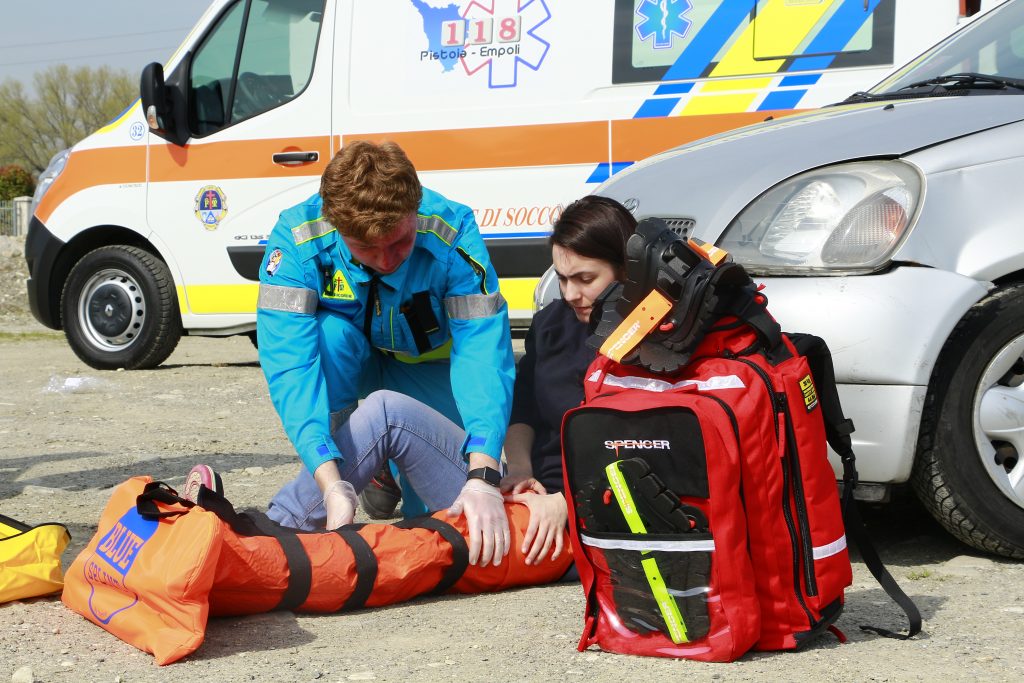
Patient intervention: how to perform the secondary survey
The secondary survey is a methodical check to assess a responsive casualty for any other injuries or illnesses
Secondary survey:
- After primary survey ask questions about history using AMPLE.
- Look for signs and symptoms of minor and serious injury.
Secondary Survey, What to do
- Once you have completed a primary survey and treated any life-threatening conditions, move on to a secondary survey. Ask a responsive casualty and those around them questions about any incident that may have occurred. Your aim is to find out more about the casualty’s history, signs and symptoms. If possible, take note of their answers.
Leave the casualty in the position found until you are satisfied that it is safe to move them into a position more suitable for their injury or illness.
- History – find out more about the casualty’s history. Use the mnemonic AMPLE as an easy reminder. Look out for any medical warning jewellery which may provide information their medical history or any allergies.
Allergy – Do they have any allergies? For example, nuts or any medication such as penicillin or aspirin?
Medication – are they taking any medication?
Previous medical history – do they suffer from any medical condition such as diabetes, epilepsy or heart disease? Have they had any previous injuries or surgery?
Last meal – when did they last eat or drink?
- Event history – what happened and where? Is the incident due to an illness or an accident? Ask any people nearby what happened and look for any clues that may give you more information.
- Signs – look, listen, feel and smell for any signs of injury such as swelling, deformity, bleeding, discolouration or any unusual smells. When checking them you should always compare the injured side of the body with the uninjured side. Are they able to perform normal functions such as standing or moving their limbs? As you check, make a note of any superficial injuries to treat once you’ve finished your examination.
- Symptoms – ask the casualty short, simple questions about any symptoms and sensations they may be feeling. They should answer in as much detail as possible.
For example, ask them:
Do you have any pain?
Where is the pain?
When did the pain start?
Can you describe the pain, is it constant or irregular, sharp or dull?
Is the pain made worse by movement or breathing?
Read Also:
Emergency Live Even More…Live: Download The New Free App Of Your Newspaper For IOS And Android
First Aid: How To Do The Primary Survey (DR ABC)
How To Carry Out Primary Survey Using The DRABC In First Aid
What Should Be In A Paediatric First Aid Kit
Does The Recovery Position In First Aid Actually Work?
Is Applying Or Removing A Cervical Collar Dangerous?
Cervical Collars : 1-Piece Or 2-Piece Device?
Cervical Collar In Trauma Patients In Emergency Medicine: When To Use It, Why It Is Important
KED Extrication Device For Trauma Extraction: What It Is And How To Use It
ABC, ABCD And ABCDE Rule In Emergency Medicine: What The Rescuer Must Do
Treating Injuries: When Do I Need A Knee Brace?
Wrist Fracture: How To Recognise And Treat It
RICE Treatment For Soft Tissue Injuries
First Aid, Fractures (Broken Bones): Find Out What To Look For And What To Do


